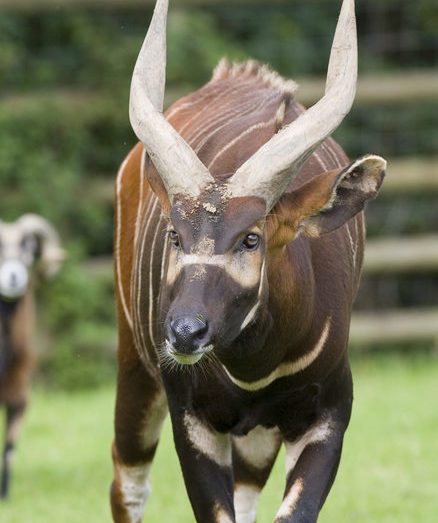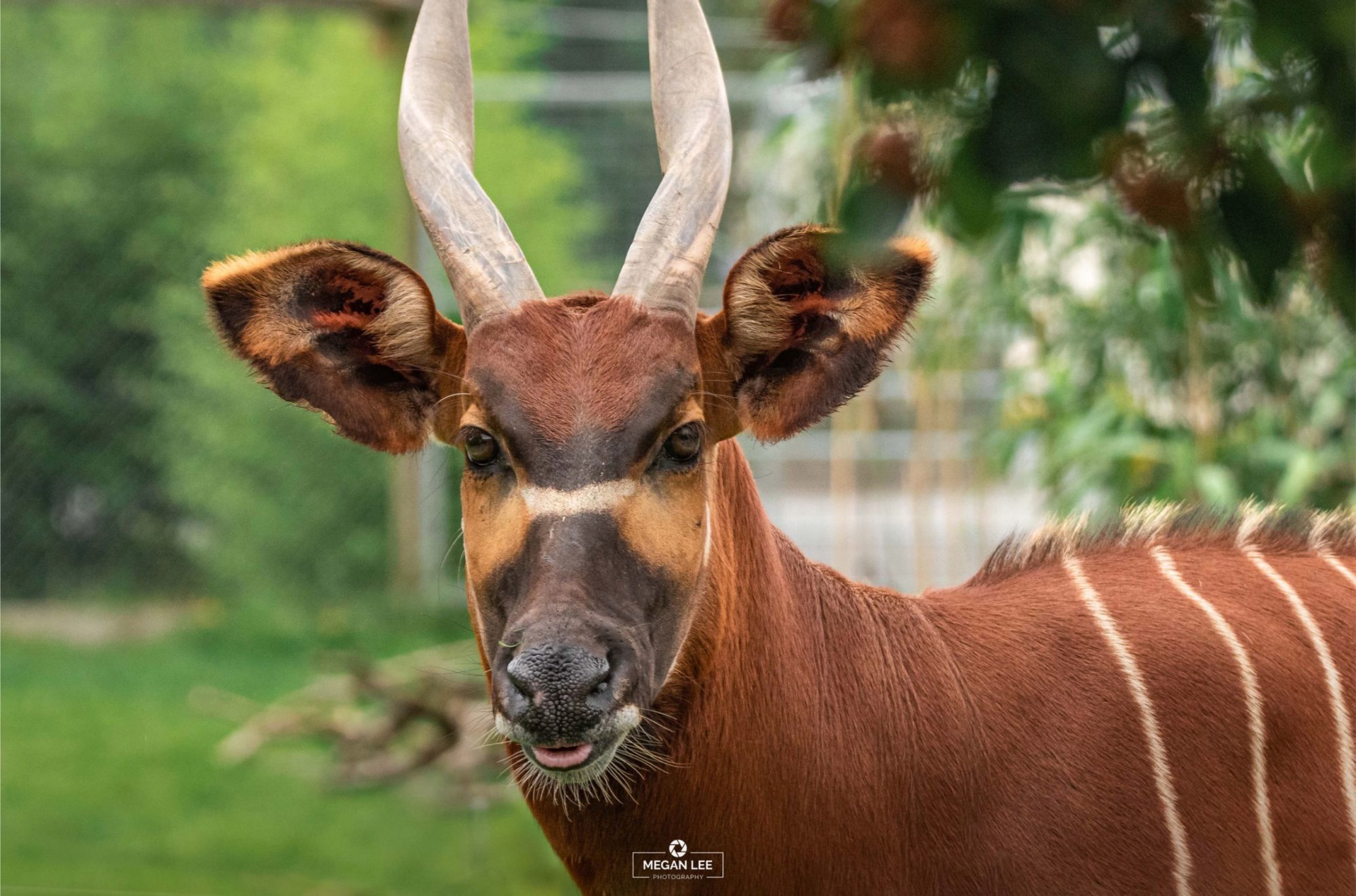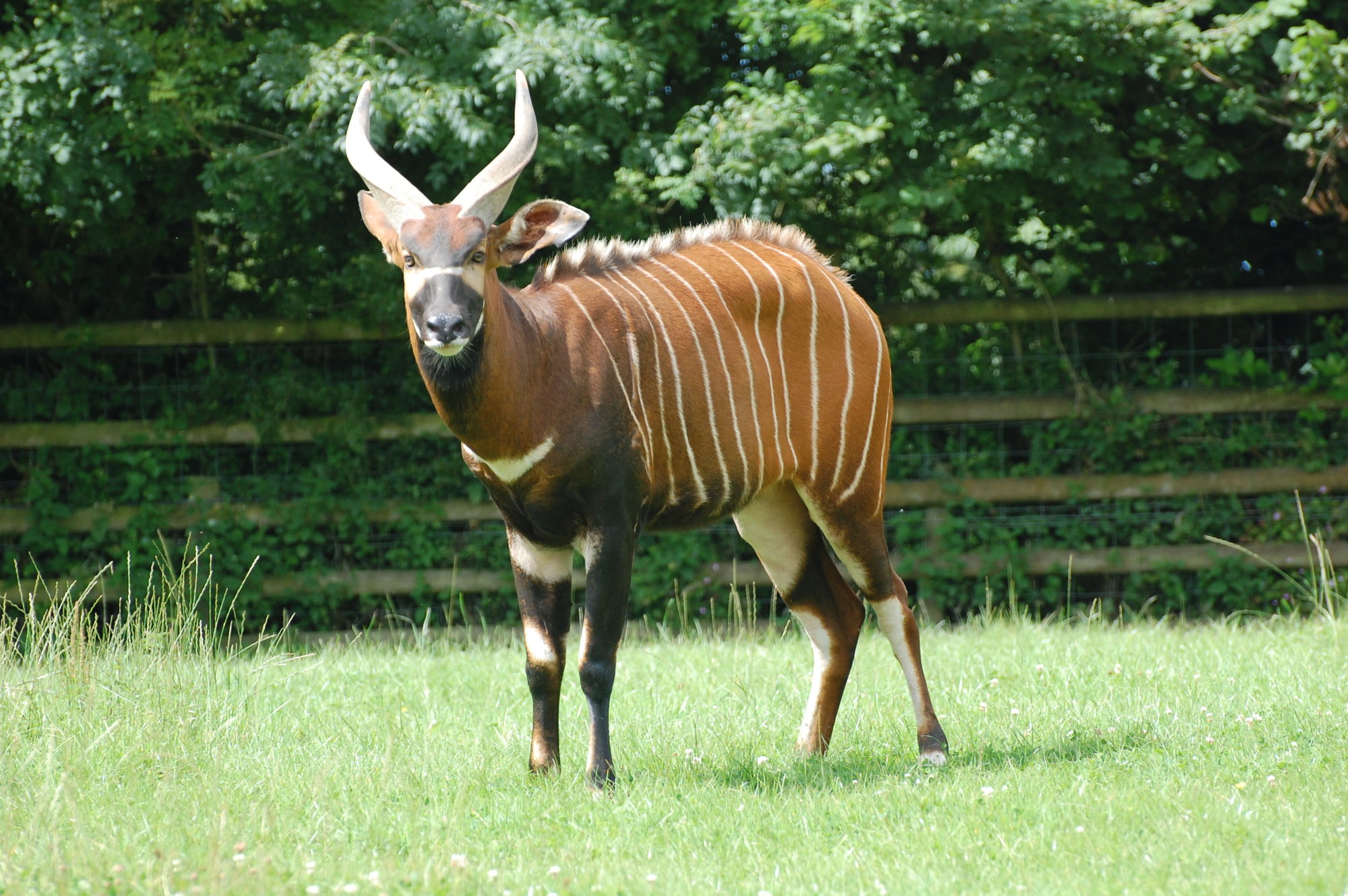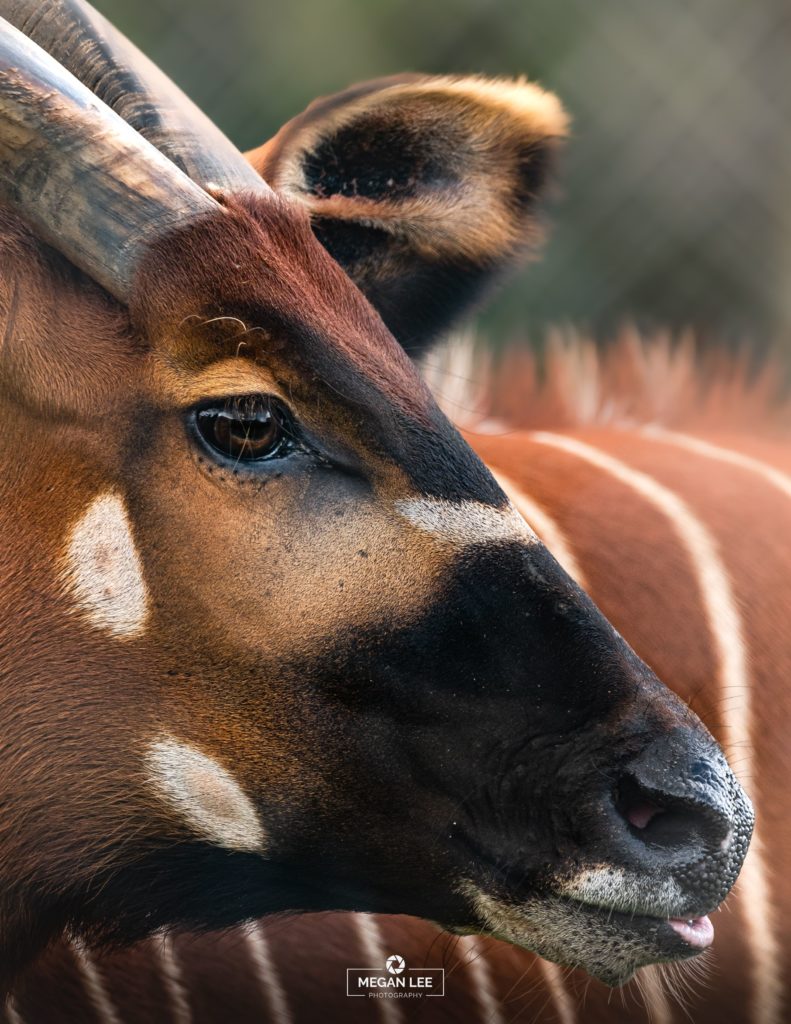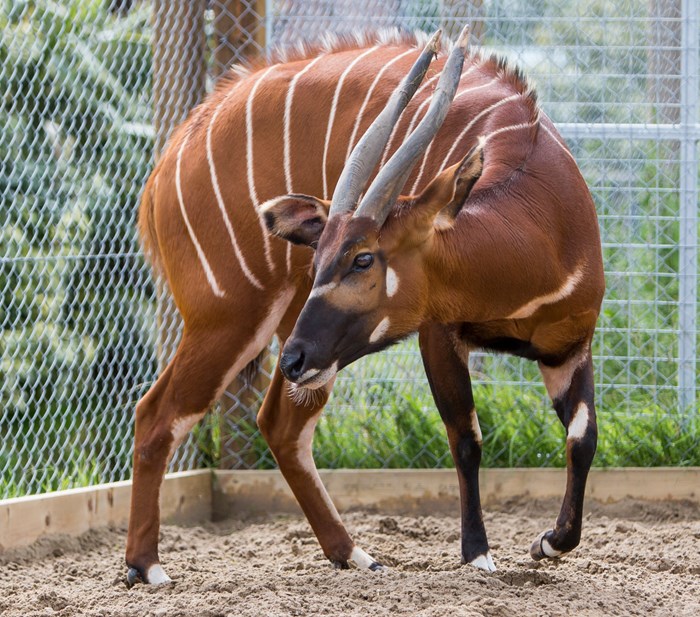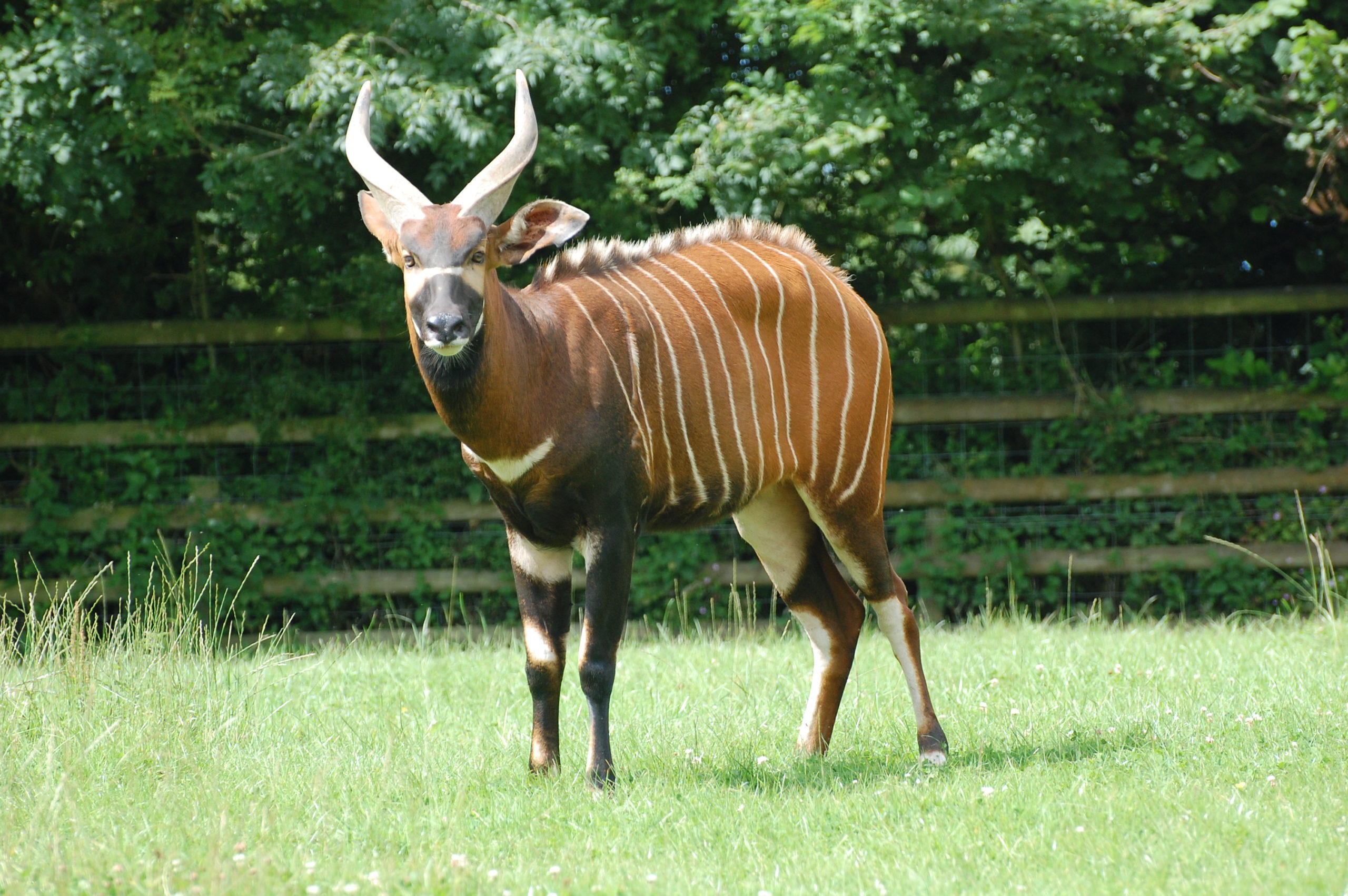

Bongos are extremely shy animals and if you were to startle one in the wild it would run away and hide.
Both male and females can have as many as 10-15 white stripes each and they really stand out against their chestnut-brown coloured coat.
They can grow some very impressive horns and unlike deer that grow and shed their antlers annually the bongo keep theirs throughout their lives. Because they live in dense, or thick, forest they use their horns to measure whether they can fit their body through gaps. Their horns are as wide as the widest part of their body.
Bongos are most active between dusk and early dawn and this is when they are at their most vocal too. They make all sorts of noises from grunting to snorting, bleating to mooing. Can you bleat like a bongo? Go on…give it a try.
There are thought to be fewer than 150 bongo left in the wild. The biggest threats to them are hunting and the destruction of their habitat (where they live). Groups such as the African Wildlife Foundation work tirelessly on initiatives such as ‘wildlife corridors’ (large areas of land allowing bongos to move freely and safely) and providing vital eco knowledge through education.
Our Eastern bongos are part of an European Endangered Species Breeding Programme (EEPs).
Latin name
Tragelaphus eurycerus
Class
Mammalia
Order
Artiodactyla
Family
Bovidae
Conservation status
Critically endangered
Impress your friends with everything you know about Bongos!
ood wise, they love to munch on leaves, shoots and grasses. Yum!
Two. The western or mountain bongo and the eastern or lowland bongo. Ours are Eastern.
They can live up to 19 years in the wild.
Eastern bongos can be found in one remote area of Kenya
